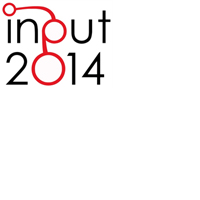The Model of Voronoi's Polygons and Density: Diagnosis of Spatial Distribution of Education Services of EJA in Divinópolis, Minas Gerais, Brazil.
Abstract
This paper represents the application of a methodology that supports urban environmental studies to the identification and mapping of areas of influential points or spatial phenomenal occurrences, using the techniques of Multicriterial Analysis and of Voronoi Polygon. It focuses on the use of institutional alphanumeric database transformed into spatial analysis by the use of GIS and models of distribution, to support decision-making regarding allocation strategies and expansion of centers of experimental education called “EJA” (Youth and Adults Education) in Divinópolis, a city in the state of Minas Gerais, Brazil. It describes the process of data that composes information which makes possible to perform urban analyzes and to simulate the scenarios considering the expansion of the system and the review of the allocation of some points.Downloads
References
Anselin, L. (1999). Interactive techniques and exploratory spatial data analysis. In.: Longley, P., Goodchild, M., Maguire, D. e Rhind, D. (eds.). Geographical Information Systems: Principles, Techniques, Management and Applications. New York: Jonh Wiley & Sons.
Bertalanffy, Ludwig Von (1975).Teoria Geral dos Sistemas. São Paulo: Vozes.
Bonham-Carter, G. (1994). Geographic Information Systems for Geoscientists; modelling with GIS. Ottawa: Pergamon.
Castro, Dayan M (2010). Procedimentos de data mining na definição de valores para as análises de multicritérios como apoio à tomada de decisões e análise espaciais urbanas. XXIV Congresso Brasileiro de Cartografia.
Chorley, J., Hagget, P. (1967). Models, Paradigms and the New Geography. In.: Integrated Models in Geography. London: Methuen.
Dalkey, N; Helmer, O. (1963). An experimental application of the Delphi method to the use of experts. Management Science, v. 9, n. 3.
Freire, P. (1999). Pedagogia da Esperança: Um reencontro com a Pedagogia do Oprimido. São Paulo: Paz e Terra.
FUNEDI (2013). Diagnóstico-base para elaboração do Anteprojeto de Fundação Educacional de Divinópolis.
Huggett, R. (1980). Systems analysis in geography; contemporary problems in geography. Oxford: Clarendon Press.
IBGE (2010). Census . Available in :http://www.censo2010.ibge.gov.br
Linstone, H., Turoff, M. (2002). The Delphi Method: Techniques and Applications. Turoff and Linstone.
McHarg, Ian L. (1969). Design with nature. Garden City - NY, Natural History Press.
Moura, Ana Clara M. (2003). Geoprocessamento na gestão e planejamento urbano. Belo Horizonte: Ed. da autora.
MOURA, Ana Clara M. (2009). Discussões metodológicas para aplicação do modelo de Polígonos de Voronoi em estudos de áreas de influência fenômenos em ocupações urbanas. VII ENABER, São Paulo: FEA/USP.
Instituto Paulo Montenegro (2011). INAF Brasil 2011: indicador de alfabetismo funcional: principais resultados.
Saaty, T. L. (1980). The Analytic Hierarchy Process. N. York: McGraw-Hill.
Secretaria de Educação de Divinópolis (2012). Chamada Pública Da EJA, Divinópolis, Brasil.
Xavier-da-Silva, J. (2001). Geoprocessamento para análise ambiental. Rio de Janeiro: J. Xavier da Silva.
Xavier-da-Silva, J. (1999). SGI's: uma proposta metodológica. Rio de Janeiro: Lageop.

Copyright (c) 2014 Tema. Journal of Land Use, Mobility and Environment

This work is licensed under a Creative Commons Attribution 4.0 International License.
Authors who publish in this journal agree to the following:
1. Authors retain the rights to their work and give in to the journal the right of first publication of the work simultaneously licensed under a Creative Commons License - Attribution that allows others to share the work indicating the authorship and the initial publication in this journal.
2. Authors can adhere to other agreements of non-exclusive license for the distribution of the published version of the work (ex. To deposit it in an institutional repository or to publish it in a monography), provided to indicate that the document was first published in this journal.
3. Authors can distribute their work online (ex. In institutional repositories or in their website) prior to and during the submission process, as it can lead to productive exchanges and it can increase the quotations of the published work (See The Effect of Open Access)
